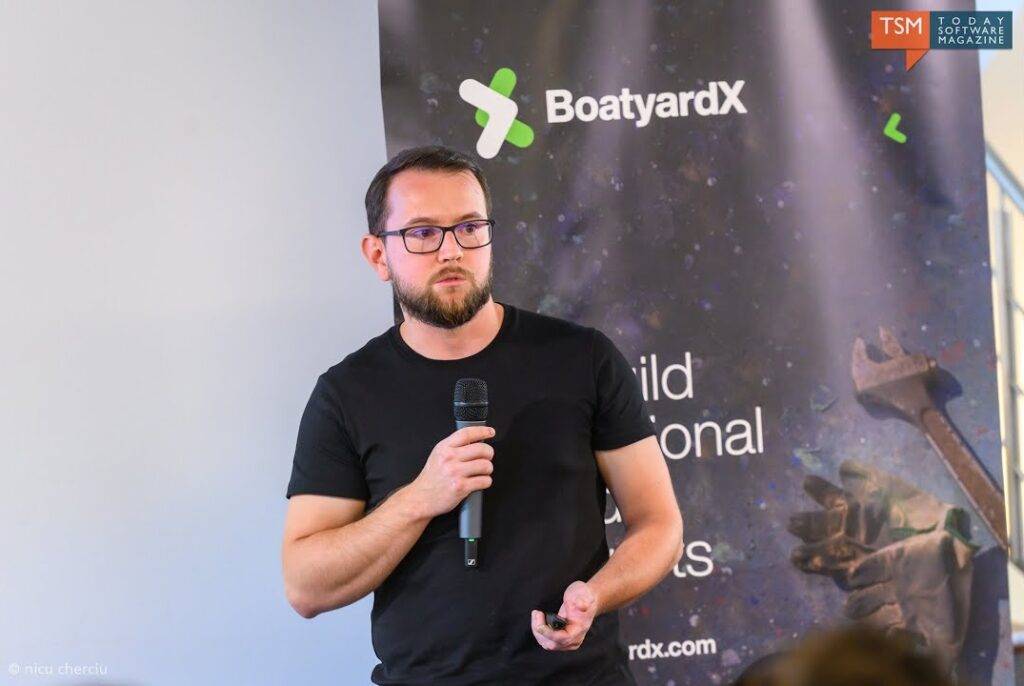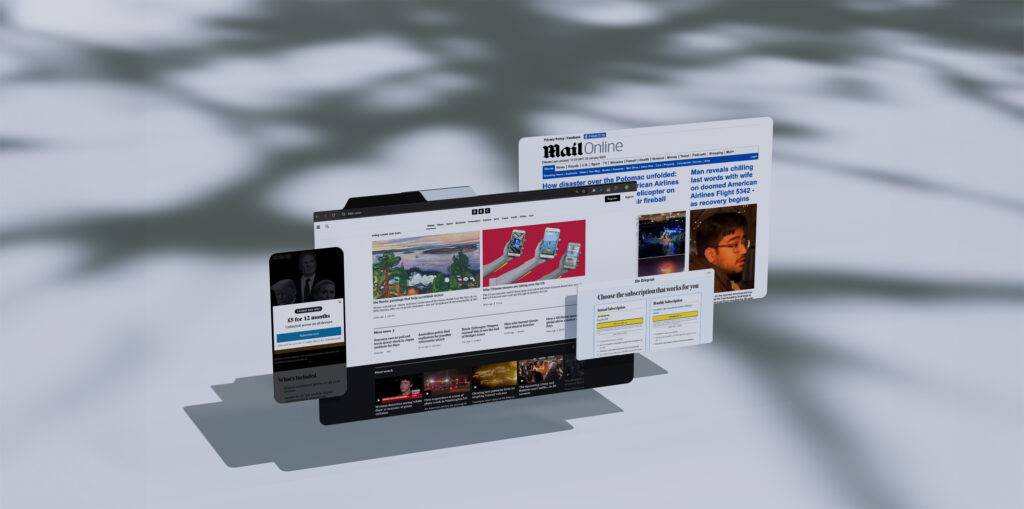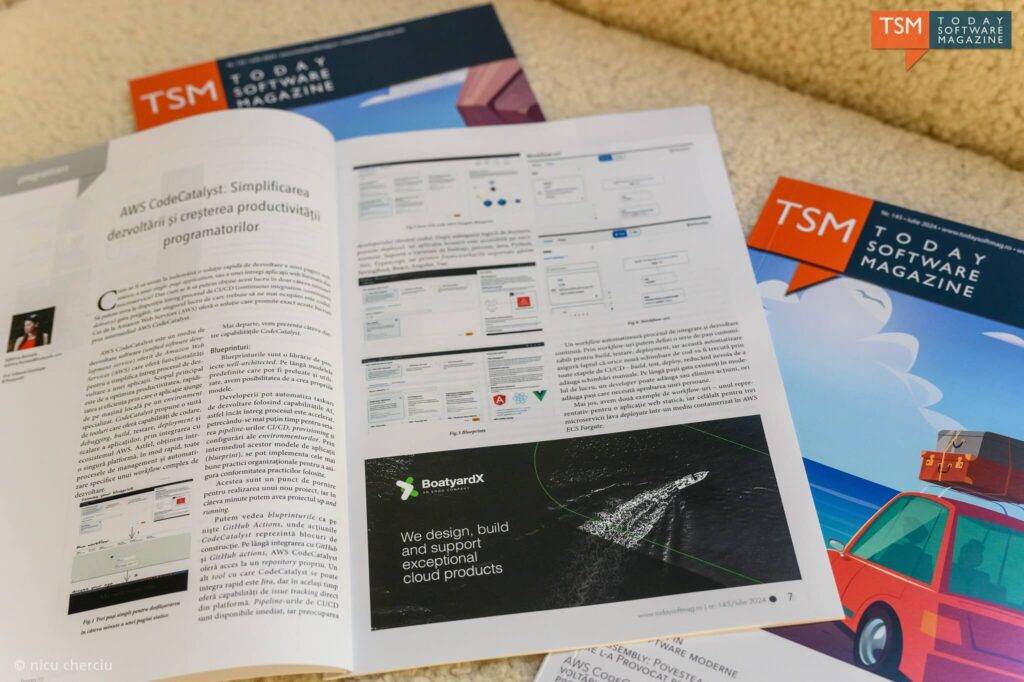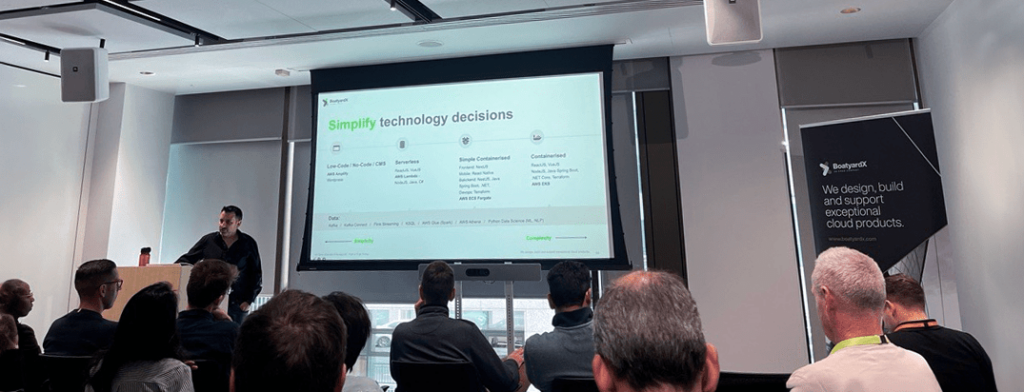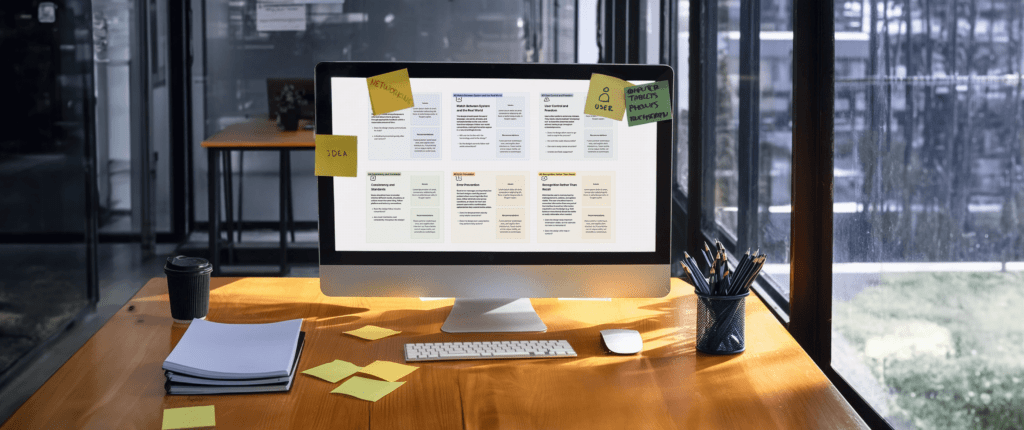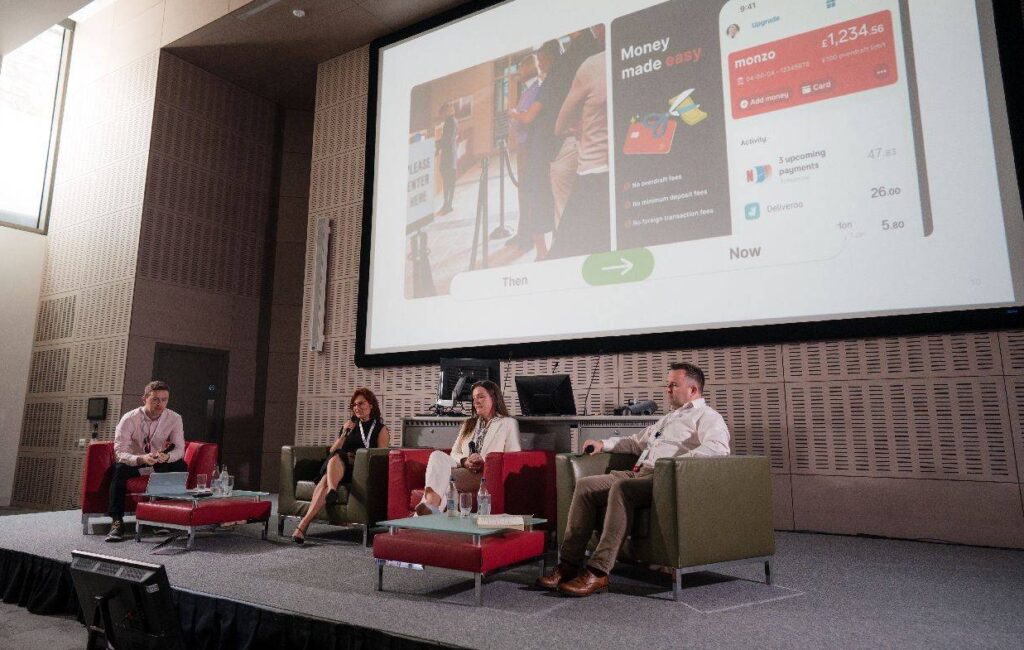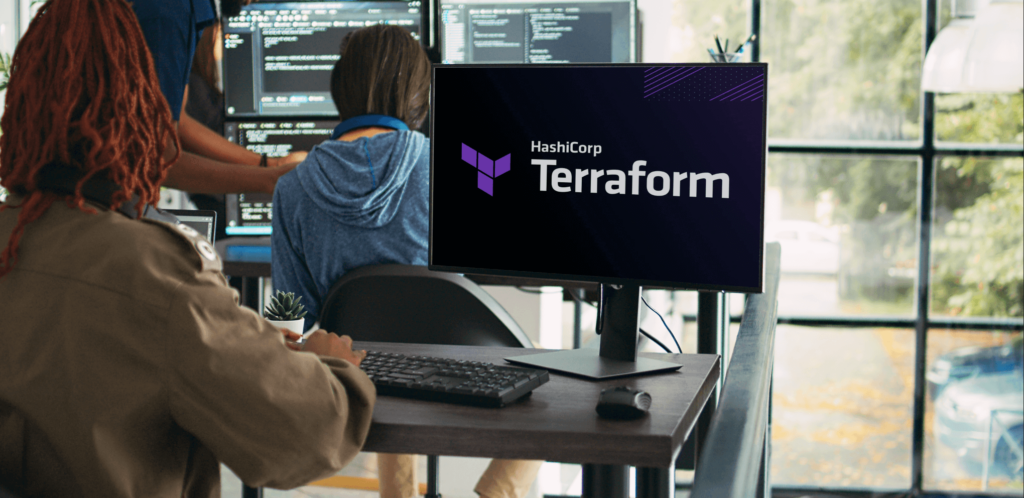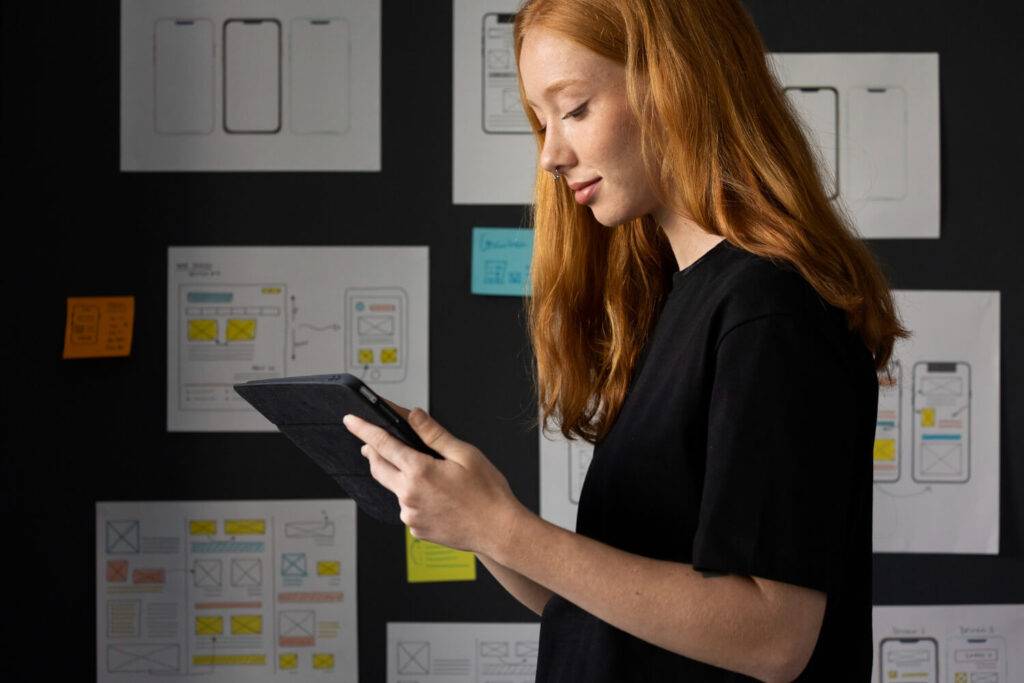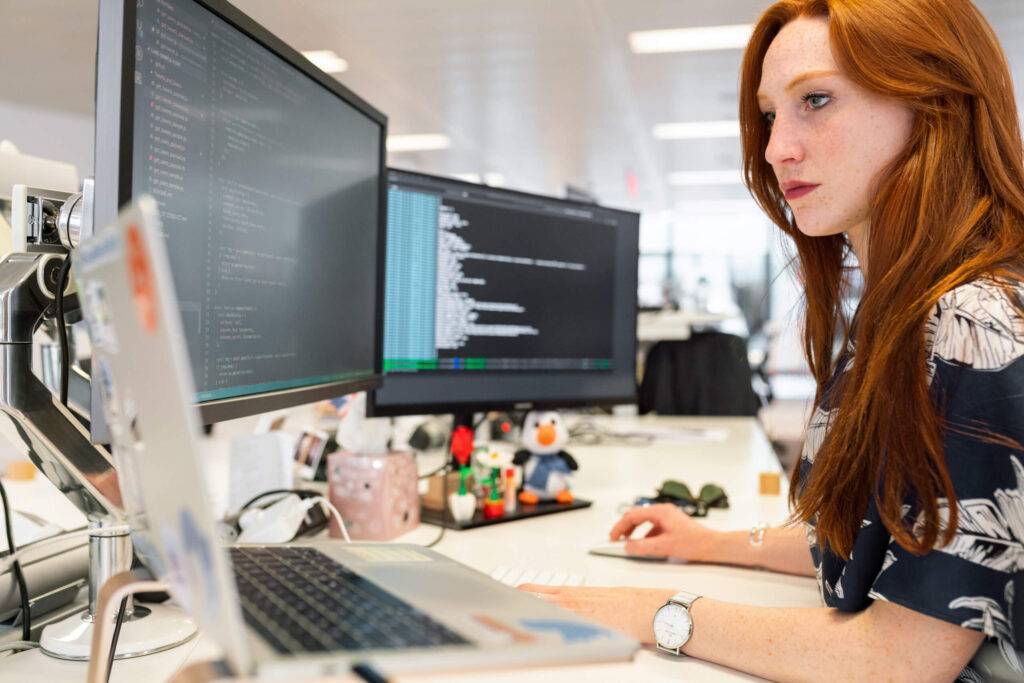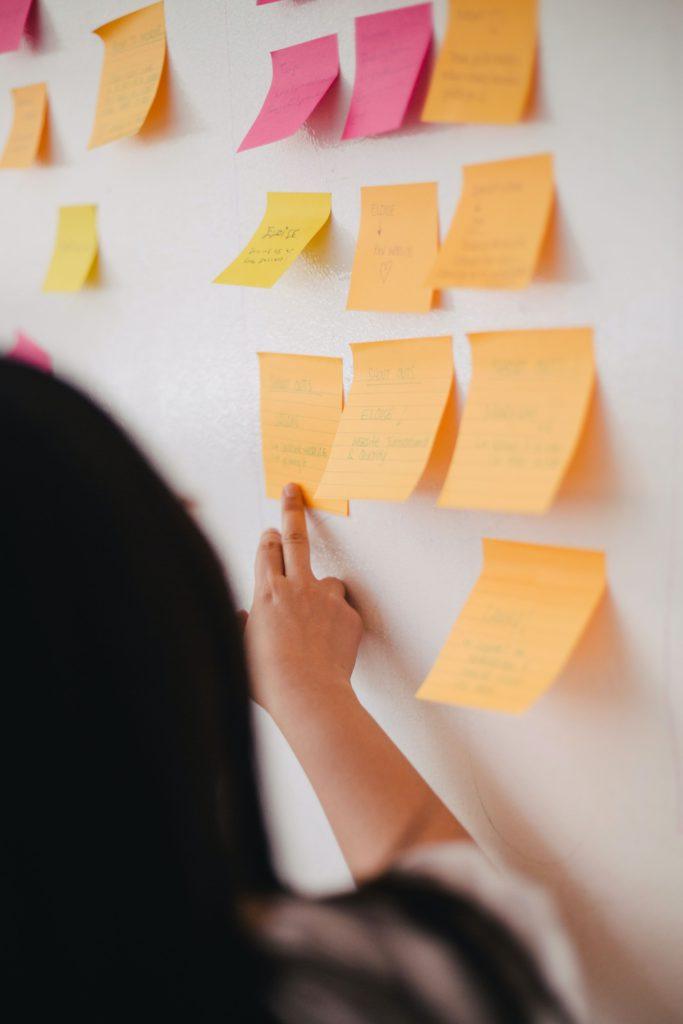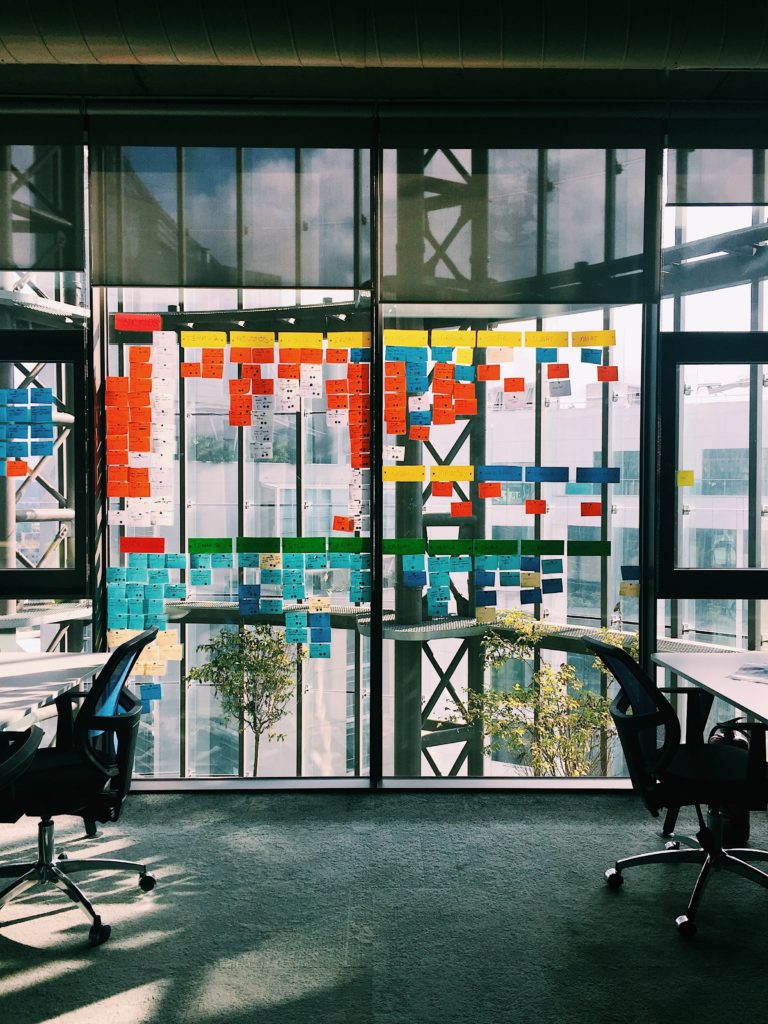- Karolina Coates, Head of Design at BoatyardX
At Adminovate 2024, Karolina Coates, Head of Design at BoatyardX, joined industry leaders Jac Dunne, CEO of dimply; Simon Gillis, Head of Product Operations at Fund Recs; and David Delehanty, Group Manager at Link Fund Administrators (Ireland) Limited, to discuss the evolving landscape of user experience (UX) and fintech innovation. The panel delved into the increasing demand for frictionless, intuitive digital products as customer expectations continue to rise. With a focus on simplifying experiences rather than adding features, the discussion highlighted the crucial balance between business viability, user desirability, and technological feasibility in product design. Let’s dive into the key takeaways from the panel discussions.

Key takeaways:
1. End user expectations continue to evolve.
Whether we’re talking about our customers or colleagues joining the workforce, the common denominator is waning tolerance for level of friction. We all know that a good user experience is a key differentiator, but what defines ‘good’ can be elusive precisely because customer expectations are evolving constantly.
For example, 15 years back it was a common practice to wait for bank branch to open in order to make a money transfer. A few years back, we were trying to figure out the most efficient way to input the credit card details for online shoppers. Today users get frustrated if we make them type in the long number, or an option to pay with FaceID–verifiable ApplePay is not available. That’s because the ease of completing a transaction has become table stakes. To beat that, we don’t need to add cool features, as we’re often led to believe, we need to simplify the overall experience. Simplicity requires a lot more thought and sustained effort.

2. Good user experience is frictionless.
This fundamental premise is common knowledge in the startup world. But what about larger organisations? BoatyardX has roots in fintech innovation, so we’re well in tune with challenges faced by this heavily regulated, security-focussed industry sector. Frictionless experience requires focus and orchestration on the company level. It holds true for the larger organisations, who are facing build vs buy dilemma.
In the world of SaaS solutions a solid understanding of human needs, the problem we’re trying to solve and sustained focus on the big picture is fundamental to navigating configuration vs customisation dilemmas, successful rollouts and continuous improvement of customer experience. An excellent example of how this premise can work in practice is the new breed of insuretech companies, including parametric insurance.
Where previously the end customers were facing drudgery of slow, convoluted and paper-based claims process, the disruptors in this space are collaborating with underwriters, regulators and partners to orchestrate an experience which is much more focussed on fair, timely and often pre-specified payouts. They understand the importance of delivering practical benefits of not just competitive pricing but real value, such as convenience, peace of mind, and utility through technology-enabled features.
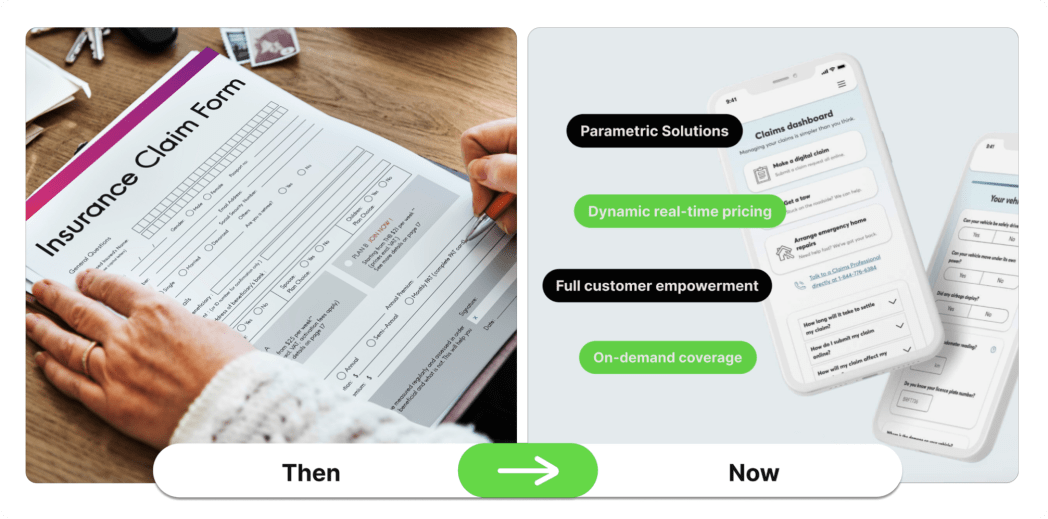
3. To create products and services that meet evolving customer expectations balance Business, User and Technology needs.
In a nutshell, creation of successful digital products evolves around balancing Business Viability, User Desirability and Technological Feasibility.
In practice, we start by exploring the big picture, context and product vision. When our end goal and context is clear, we move in a rapid and structured manner towards defining product backlog, roadmap and all the assets necessary for developers to start building the product. It’s a classic Diverge-Converge Design Thinking approach, just executed in a very pragmatic, lean way.
Crucially, we establish a reliable feedback loop between the team and end users which allows us to take guesswork out of the process and provides the team with data for making decisions with confidence.
We facilitate discovery, ideation and co-creation sessions using Miro a virtual equivalent of whiteboarding, a skillset that we found irreplaceable and honed over the years. What we’ve seen is consistently is that the issue is not that our customers don’t know what they need, the challenge lies in alignment on shared goal between departments and stakeholders and effective prioritisation. Where we add value is a) by creating an environment which enables collaboration and co-creation with the users b) add our technical expertise and c) lend our experience executing design and build in an agile manner.
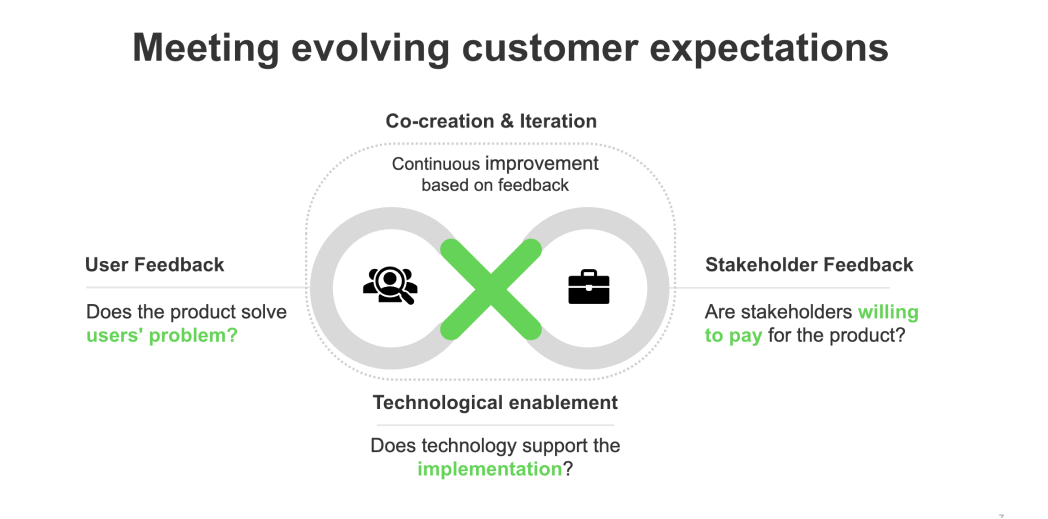
4. GenAI: what role does design play in this context and how do you see the role of designers evolve in the wake of GenAI?
Designers play a fundamental role in keeping products honest and companies in touch with human needs. Their role is to ensure that the vision is clearly defined and carried through the development. Not only AI is not going to replace this, even more than ever we will need the creative, human-connection and alignment building skills.
Ironically, currently available GenAI tools are perfect illustration of why we need designers more than ever.
GenAI tools are technologically brilliant and incredibly powerful, yet the current experience is poor, limiting their adoption and impact. We’re at the command-line, DOS console stage of experience maturity and we have a long way to go to make it intuitive and usable to wider population.

By keeping products honest and companies in touch with human needs, designers help to create experiences that are frictionless, simple, and focused on delivering real value to customers.
Read more tech topics
Cloud migration promises scalability, innovation, and long-term cost efficiency. Beneath the surface, however, many organisations encounter unexpected expenses that can derail timelines and budgets.
In recent years, software architectures have evolved rapidly, reflecting the changing needs of software developers and the business environment.
There’s a common belief in the digital world: paying for something guarantees a better experience. But is this always true?
How convenient would it be to have a quick solution at hand for developing a static web page, a proof-of concept application, a single-page application, or even a complete web app built with microservices?
Building a cloud-based product can be daunting for startups, especially when faced with a plethora of choices, trade-offs, and challenges.
Proud of your product but sense it hasn’t quite hit its stride? UX audits are an essential tool to ensure it hits its full potential.
At Adminovate 2024, Karolina Coates, Head of Design at BoatyardX, joined industry leaders to discuss the evolving landscape of user experience (UX) and fintech innovation.
The BoatyardX DiscoverX workshop is a collaborative, interactive experience where clients have the opportunity to explore product and technology concepts.
In today's fast-paced digital landscape, businesses are continually seeking innovative solutions to manage their infrastructure efficiently – and for good reason.
Within the sphere of modern applications, prioritising user experience has become paramount.
Whether you are a startup or a large corporation, it's likely you will face many of the same challenges in building the first version of a new product or application. We explore some of the critical success factors and lessons learned from supporting a broad range of clients in bringing new products to life.
We live in the times when seamless user experiences (UI/UX) are the cornerstone of digital success, businesses are strategically leveraging the nearshore advantage to bolster their design teams.
Before solution and implementation are merged into the upstream branch, a code review is a crucial stage in the software development cycle to obtain a second viewpoint.
Computer vision has become a significant influence in the remaking of numerous sectors in a time when technological innovation is the driving force.
In today's rapidly evolving digital landscape, the success of a product or service hinges on the user experience (UX) it delivers.
With over four years of experience as a .NET developer under his belt, Petru felt it was time to explore the growing demand for DevOps expertise, specifically in technologies.
WebRTC (Web Real-Time Communication) is an open-source transformative technology that revolutionizes real-time audio, video, and data sharing within web browsers.
What do startup founders and enterprise technology leaders have in common? Nightmare stories about unintended consequences of technology decisions.
Cognitive biases can have a significant impact on the quality and effectiveness of software being developed. How can software developers mitigate this impact?
At a recent Microsoft event speakers and attendees struggled to best describe the significance of AI and its potential impact on enterprise.
More organisations are starting to realise that the cloud is a great enabler for innovation, not just a more efficient way of running IT applications and services.
Skill gaps, high employee turnover and fierce competition for limited talent have only added to the pressure that businesses are facing from inflation. Though it may seem counter intuitive, it’s actually a good time to modernise or even replace applications, because they could be compounding your skills challenges.
Meta has called 2023 ‘a year of efficiency’ and they are far from alone in the corporate world. Many businesses are knuckling down, shedding staff and focussing on the old adage of ‘doing more with less’. Belt tightening is a business initiative again, like the bad old days of 2008.
Factors to consider when deciding whether or not to automate your QA.
At close to 4 years old BoatyardX has, for most of its short life, been a remote-first organisation.
How design helps you validate your product ideas within our Discovery Framework.
Have you ever wondered what it takes to have that genius spark that leads to groundbreaking, brilliant ideas?
This article briefly highlights the challenges faced by many software companies, and elements of the solutions we’ve helped map out with them.
This article briefly highlights the challenges faced by many software companies, and elements of the solutions we’ve helped map out with them.
De-risk your product build by answering fundamental product and technology questions up front
Often entrepreneurs skip brand development because of budget limitations or lack of available skillset. A solid brand strategy is, however, the foundation of a successful venture which stands out from the crowd.
An active player on the IT scene, BoatyardX was featured by Today Software Magazine (RO) in tech related topics as a subject matter expert.
When technology isn’t your core business it makes sense to go to an external partner such as BoatyardX. Discover how this approach works for Toronto-based Global Solutions Team.
We were recently interviewed by a new Software Insider website using a Reporter BOT, and it didn't go great! Sometimes #articialintelligence isn't as smart as we'd expect! See what you think.
Irish technology company BoatyardX delivers a compelling case for moving to the cloud to ensure the viability of your operations for the future.
As a growing start up, it’s important not to lose sight of the security and controls required on the IT systems that underpin the business. See how a recent Pen Test has resulted in significant cost savings at BoatyardX.
Pushing a new product live and then helping to demonstrate to early beta customers is a fantastic experience for a software development team.
BoatyardX’s approach to the cloud uses scalable, flexible Kubernetes technology. For businesses undergoing digital transforming, it is the wisest strategy.
Covid-19 represents both a driver and an opportunity for businesses to use digital innovation and build new products and applications more rapidly.

